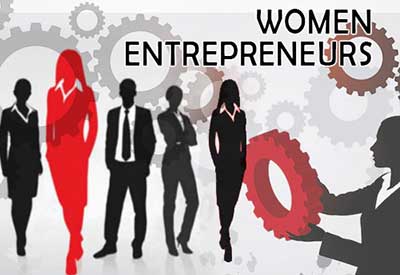GS-2: Issues Relating to Development and Management of Social Sector/Services relating to Health, Education, Human Resources.
GS-3: Inclusive Growth and issues arising from it.
Key phrases : Entrepreneurship, NASSCOM
Why in news
IIM Bangalore launches course for women entrepreneurs
Analysis:
- Status of women in Indian workforce
- Women labour participation at 27%-not realizing human potential and letting go the demographic capital which we have with worlds youngest population
- Female labour income is equal to 18 per cent which is lower than the average in Asia (21 per cent excluding China). This value is one of the lowest in the world
- Women have increased their representation at the top of the wage distribution since the 1990s in many countries but the rise is not huge
- Unpaid Labor: On an average, women spend 2.4 more hours per day than men on unpaid care and domestic work.
- Women have been hit harder than men by the pandemic, losing income and leaving the labour market at a greater rate.
Reasons behind these gaps
- Cultural institutions in India, particularly those of patrilineality (inheritance through male descendants) and patrilocality (married couples living with or near the husband’s parents), play a crucial role.
- A culturally ingrained parental preference for sons – emanating from their importance as caregivers for parents in old age – is linked to poorer consequences for daughters.
- The dowry system, involving a cash or in-kind payment from the bride’s family to the grooms at the time of marriage, is another institution that disempowers women. The incidence of dowry has been steadily rising over time across all region and socioeconomic classes.
- Around the world, women still have less access to education than men. ¼ of young women between 15-24 will not finish primary school. That group makes up 58% of the people not completing that basic education.
- There’s an inherent belief that men are simply better equipped to handle certain jobs. Most of the time, those are the jobs that pay the best. This discrimination results in lower income for women.
- Countries where the majority of inhabitants have no religious affiliation display the lowest levels of gender inequality, and countries with the highest levels of gender inequality are those with high levels of religious affiliation.
- Hardly any steps for political representation of women-14%-woman participation in Indian parliament.
- Gender exploitation in unorganized sector go unrecorded.
- Globally, the value of women’s unpaid work performed is three times higher than that of men, whereas in the Asia-Pacific region, it is four times higher.
- Though they comprise almost 40 percent of agricultural labour, they control only 9 percent of land in India.
Hurdles they face in entrepreneurship
- Women are to turn entrepreneurial even within a social order that still expects them to perform household work, reproduce caste and class, and prepare families for school and work.
- Emphasis on empowering women without altering a larger social structure plays out in at least two ways. In the first, women were forced to compete for funding in male-dominated start-up worlds. It demands mobility across the spaces of innovation, networking, and leisure. Meanwhile, women entrepreneurs had their days curtailed on both ends.
- Women’s entrepreneurship is not recognised as valuable because women are not recognised as entrepreneurial. They are seen by funders as homemakers with their primary allegiance to the domestic realm.
Government efforts
- Ministry of Women & Child Development: A separate ministry was established in 2006 to boost employability of Women.
- Maternity Benefit (Amendment) Act, 2017: It allows for pregnant women to take leave for a total of 26 weeks out of which up to 8 weeks can be claimed before delivery.
- The Dowry Prohibition Act, 1961 to eliminate the practice of dowry.
- Pre-Conception and Pre-Natal Diagnostic Techniques Act, 1994 to stop female infanticide and many more such Acts.
- Sexual Harassment of Women at Workplace (Prevention, Prohibition and Redressal) Act 2013: It has been enacted covering all the women, in spite of their age and employment status, and protects them from sexual harassment at workplaces, in both the public and private sectors of the industry.
- Social Security Code, Code on Occupational Safety, Health & Working Conditions Code, and Industrial Relations Code, 2020: Under the new codes, women have to be permitted to work in every sector at night, but it has to be ensured that provision for their security is made by the employer and consent of women is taken.
Way ahead
- Need to create avenues and opportunity with conscious effort for empowering women rather than giving freebies.
- Article 15 should be considered and positive discrimination should be there wherever needed.
- Until we see this as a mindset issue, i.e. we change the patriarchal mindset and our myths and misconceptions around the preference for son’s, etc. we would probably be discussing all these issues in an economic perspective.
- Need ownership of the idea that women’s employment is something that you want to achieve as a goal and not by chasing statistics.
- Encouragement from the family, society and the corporations with whom they are employed with.
- Vocational and technical training, life skills and financial literacy programmes for women to help them develop marketable skills and better decision-making abilities.
- Enhancing women’s access to the internet and ICT can create a market of connected women who can be linked to business opportunities.
- Rather than training women to compete in this impossible economy of high valuation and burnout or sequestering them in women-only groups that work through the individual, we need to re-evaluate how we assign value to different forms of work.
Source: The Hindu BL









